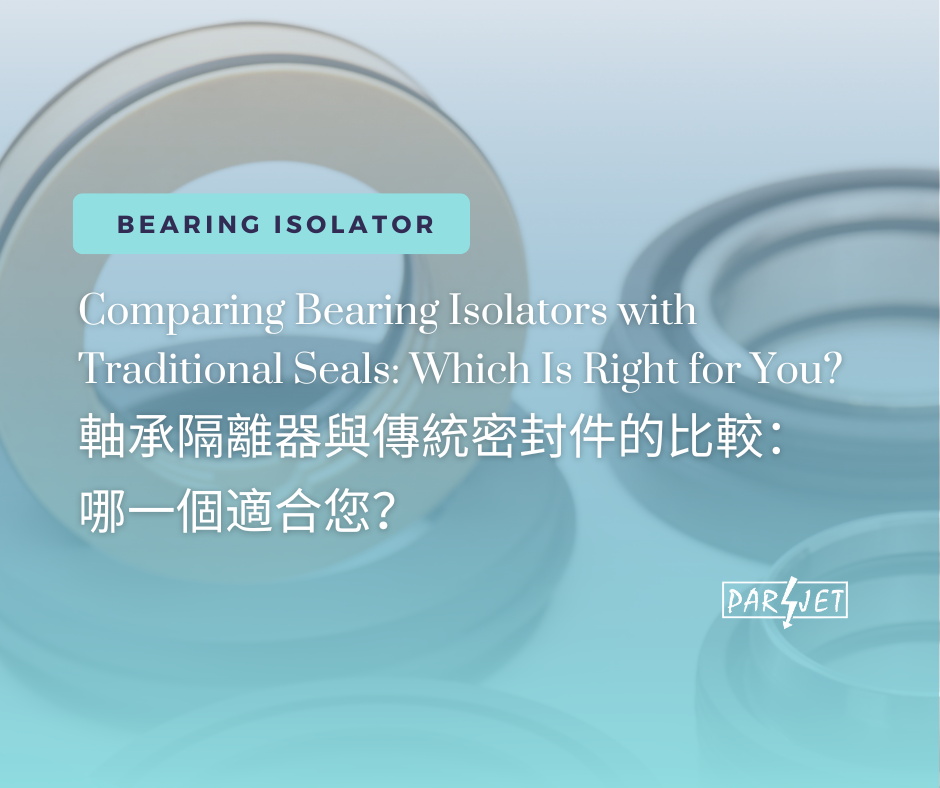Comparing Bearing Isolators with Traditional Seals: Which Is Right for You?
When it comes to protecting rotating equipment, choosing the right sealing solution can make a big difference in performance, maintenance needs, and overall equipment lifespan. Traditional seals and bearing isolators each have distinct advantages, but their performance varies based on factors such as application environment, maintenance priorities, and operational costs. This guide will compare bearing isolators and traditional seals, helping you understand which option might be best for your needs.
1. Understanding the Basics: Traditional Seals vs. Bearing Isolators
- • Traditional Seals: These include a variety of contact seals like lip seals, O-rings, and mechanical seals. Typically made of rubber or elastomer, traditional seals rely on direct contact to create a seal against contaminants and retain lubricants.
- • Bearing Isolators: Bearing isolators are a type of non-contact seal that utilizes a labyrinth-style design to prevent leakages and block contaminants. Often made from materials like PTFE or metal, bearing isolators are engineered for durability and do not rely on contact with the shaft, minimizing wear.
2. Performance in Contaminant Protection
- • Traditional Seals: These seals can effectively block contaminants initially, but they can wear out over time due to the friction between the seal and the rotating shaft. As the seal wears down, it becomes less effective, leading to leakage and contamination.
- • Bearing Isolators: Bearing isolators excel in protecting against contaminants, especially in harsh environments with dust, moisture, and chemicals. Their labyrinth design keeps contaminants out without physical contact, meaning they don’t wear down as quickly as traditional seals.
Bottom Line: For applications in dirty, wet, or abrasive environments, bearing isolators offer better long-term contaminant protection with less maintenance compared to traditional seals.
3. Wear and Durability
- • Traditional Seals: The contact nature of traditional seals causes gradual wear, which can lead to frequent replacements, higher maintenance costs, and increased downtime. This wear is accelerated in high-speed applications where friction generates more heat.
- • Bearing Isolators: With no contact against the shaft, bearing isolators experience virtually no wear. This makes them ideal for continuous operation and high-speed applications, as they maintain their integrity over extended periods.
Bottom Line: Bearing isolators generally outlast traditional seals, especially in high-speed or continuous-use applications, reducing the need for frequent replacements.
4. Maintenance Requirements and Downtime
- • Traditional Seals:The wear-and-tear nature of traditional seals often requires regular maintenance, including replacement, which leads to additional costs and operational downtime. If the seal fails suddenly, it can result in unplanned equipment shutdowns.
- • Bearing Isolators: Bearing isolators typically require fewer replacements, thanks to their long lifespan and ability to maintain a tight seal without physical wear. This means less downtime and more consistent operation.
Bottom Line: For applications where minimizing downtime is crucial, bearing isolators are a better choice due to their reduced maintenance needs.
5. Energy Efficiency and Friction
- • Traditional Seals: Friction between the seal and the rotating shaft creates drag, increasing energy consumption over time. Additionally, this friction generates heat, which can impact the performance of sensitive equipment components.
- • Bearing Isolators: Since bearing isolators don’t rely on contact, they produce minimal wear, allowing equipment to operate more efficiently. The reduced friction also helps avoid heat buildup, which contributes to equipment longevity.
Bottom Line: Bearing isolators offer better energy efficiency and less wear due to the absence of friction, which can be beneficial in energy-sensitive or high-speed applications.
6. Cost Considerations
- • Traditional Seals: Traditional seals generally have a lower upfront cost, making them a more economical choice initially. However, their shorter lifespan and higher maintenance needs can lead to more frequent replacements and long-term expenses.
- • Bearing Isolators: Bearing isolators often have a higher upfront cost due to their specialized materials and engineering. However, they tend to be more cost-effective over time by reducing maintenance, replacements, and downtime costs.
Bottom Line: While traditional seals are budget-friendly initially, bearing isolators often provide better value in the long run, especially for applications requiring long-term reliability.
7. Temperature and Chemical Resistance
- • Traditional Seals:Some traditional seals, like rubber or elastomer-based seals, have limitations in terms of temperature and chemical resistance. Prolonged exposure to heat, cold, or aggressive chemicals can degrade the seal, leading to potential failure.
- • Bearing Isolators: Bearing isolators are available in materials like PTFE and metal that provide excellent resistance to extreme temperatures and chemicals. This makes them a robust choice for applications with fluctuating temperatures or chemical exposure.
Bottom Line: For applications involving extreme temperatures or chemicals, bearing isolators offer better resistance and longer service life.
8. Choosing the Right Solution for Your Needs
- • When to Choose Traditional Seals: Traditional seals may be suitable for low-speed applications or environments that are relatively clean and controlled. They are also cost-effective for short-term use or if frequent maintenance is not a major concern.
- • When to Choose Bearing Isolators: Bearing isolators is ideal for harsh environments, high-speed or high-temperature applications, and situations where downtime is costly. They’re especially beneficial in industries like oil and gas, food processing, pharmaceuticals, and manufacturing, where contamination protection and equipment reliability are critical.
Conclusion
In making the decision between traditional seals and bearing isolators, it’s important to consider the specific needs of your application. While traditional seals offer a lower initial cost, bearing isolators provide superior performance, durability, and cost-effectiveness in the long term. For environments with high contamination risks, extreme temperatures, or high operational demands, bearing isolators are often the more reliable choice, helping to reduce maintenance costs and extend the life of your equipment.
At Parjet, we design and manufacture bearing isolators that can be tailored to different requirements. Read more about ParSave® - Bearing Isolator and contact us here.






